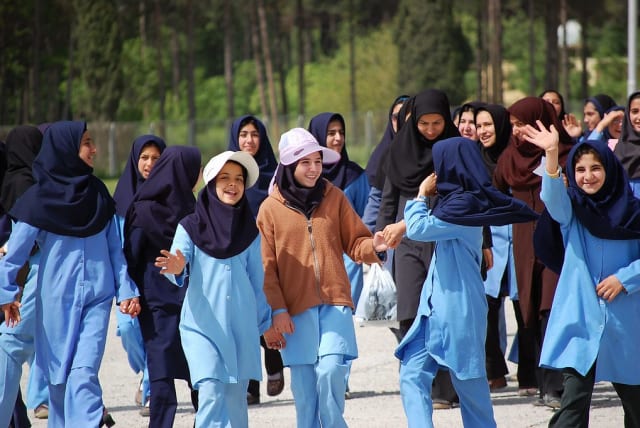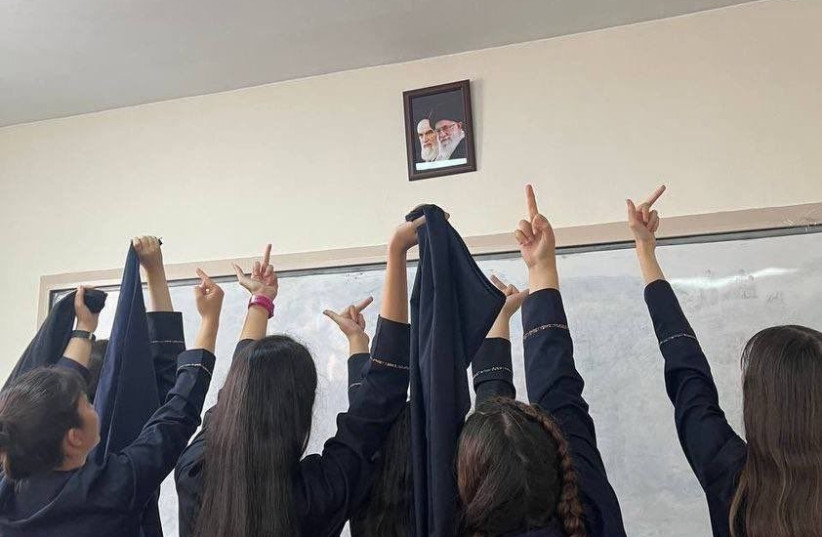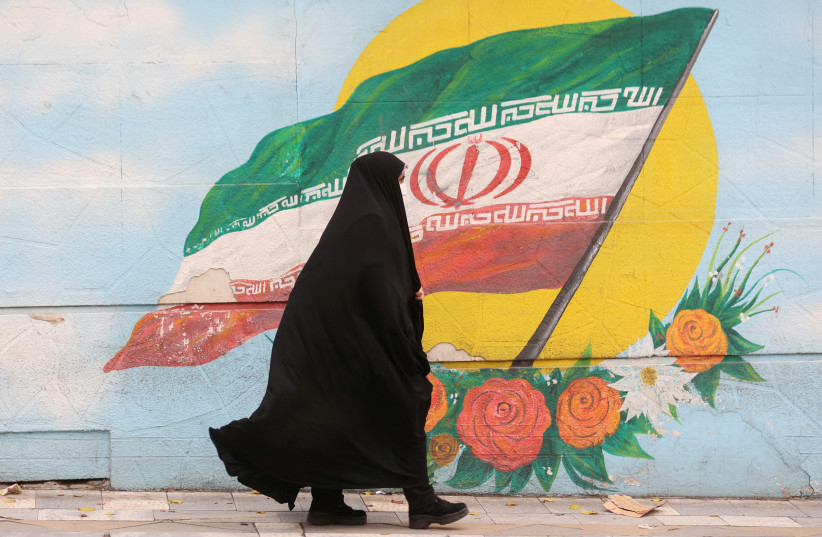Full scope of poison attacks against Iranian schoolgirls revealed

Sources have provided The Media Line with a true picture of the extent of the incidents, including the names of many of the schools singled out for attack
Poison gas attacks on schoolgirls in Iran have shocked the world for months, from with the first reports in November, at the height of the protests against the regime triggered by the death of a young woman in the custody of its morality police.
Sources inside and out of Iran have provided The Media Line with a true picture of the extent of the incidents, including the names of many of the schools singled out for attack, the exact dates on which many of the attacks took place and the number of people affected.
The sources include The New Iran, a not-for-profit grassroots political organization established in 2010, where several of its founders have been working together against the Islamic Republic of Iran (IRI) since 2003, and involved in the fight, inside and out of the country.
Iranian schoolgirls poisoned all over the country
More than 1,000 schoolgirls at more than 26 schools in 25 of Iran’s 31 provinces have now been hit by the poison gas since the first attacks in the city of Qom in November, when 15 schools were targeted. The victims reported a smell akin to rotten oranges, followed by nausea, headaches, and finally shortness of breath left them urgently seeking medical attention.

The list of schools targeted that was provided to The Media Line covers the period from when the attacks began in November 2022 to the end of February 2023. The attacks are spread across the country, some affecting just a handful of people and others more than one hundred. The institutions targeted include both primary and secondary schools and attacks have occurred with increasing frequency, often in more than one location on the same day.
Attacks have been reported in schools for girls in many major cities, and Tehran, Ardabil, Isfahan, Shahin Shahr, Karaj and Kermanshah were even all targeted on the same day.
Frequent, repeated attacks
Qom is one of the cities whose schools have most frequently been attacked. On February 6, for example, at least 11 schools in Qom were hit with poison gas, affecting at least 86 people, The Media Line has learned. On February 14, three schools in the city were also hit, affecting 117 people.
The Ahmadiyeh Borujerd Girls' High School in Borujerd, western Iran also appears to have been singled out. It was attacked three times in four days in February, affecting at least 126 people.
Iranian Supreme Leader Ayatollah Ali Khamenei has condemned the gas attacks as “unforgivable” amid a public outcry and the removal of some girls from their classrooms by their worried parents.
Several Iranian politicians have accused religious groups that oppose girls’ education of carrying out the poisonings, and a little-known group from Qom calling itself Fadayeen-e Velayat has claimed responsibility.
The group said that allowing girls to receive an education was a violation of Islam, and threatened to step up the attacks if the authorities continue to allow female students in the classroom.
TML was unable to independently verify this, however, and the multiple experts on Iran consulted by TML knew little about the organization and cast doubt on the veracity of the claim.
Tacit support from the Iranian regime
In fact, TML’s Iranian sources and experts on the issue have suggested that the attacks are being carried out either at the behest of the government or at least with its tacit support. This, they say, is being done in order to distract the public from the ongoing protests against the regime and place responsibility for the causes of the unrest on a handful of “arbitrary Talibani extremists” who can be dealt with by the authorities “to exonerate the entire Islamic system.”
Indeed, a number of people have been arrested for allegedly carrying out the attacks. A statement by the Iranian Interior Ministry released on Tuesday said that some of the suspects had links to "foreign-based dissident media" and to the unrest that began in September following the death of 22-year-old Mahsa Amini.
The Media Line sources also suggest that the attacks are a bid to distract the Iranian public while the son of the late Shah, exiled Prince Reza Pahlavi, is on his current European tour as part of his and his supporters’ efforts to overthrow the Islamist regime and restore the monarchy.
Similarly, the sources say, the attacks could be an act of revenge against women, who have been the driving force behind the latest wave of protests. These protests are taking place under the banner “Woman. Life. Freedom.”

A more extreme suggestion is that that poison gas allegedly used in the attacks is a watered-down version of chemical weapons used in Syria by the Iranian regime’s ally President Bashar Assad in areas held by rebels fighting to end his rule. This use of such a deadly weapon, the sources speculate, is a precursor to its deployment against the protesters in Iran.
An atmosphere of terror
Similarly, they suggest, the poison attacks could be a move to create “an atmosphere of terror” among protesters and therefore prevent growing numbers from joining them as Iranian society reels from poverty, corruption and an unaffordable cost of living.
Meanwhile, a group of 20 prominent human rights lawyers in Iran has published an open letter calling for an independent, joint committee consisting of experts from the world’s top public health, children’s rights, and education-focused agencies to investigate the gas attacks.
The lawyers, in their formal letter, call on three United Nations agencies – the World Health Organization, UNICEF, and UNESCO – as well as the International Committee to investigate.
The New York-based Center for Human Rights in Iran (CHRI) stated that “due to the Iranian government’s incompetence – or unwillingness – to stop poison gas attacks against schoolgirls in Iran, international support is urgently needed to protect Iranian children and their right to education."
The US government believes an investigation into the poisonings could fall under the UN mandate. White House spokeswoman Karine Jean-Pierre stated that, “if these poisonings are related to participation in protests, then it is fully within the mandate of the UN independent fact-finding mission established last November to investigate human rights violations in Iran.”
